Polar Bears
Ursus maritimus
Population: 22,000 to 31,000
Status: Vulnerable
Weight: Males 360 Kg to 590 Kg. Females: 135 Kg to 320 Kg
Range: Arctic Circle and adjacent land masses
Life Expectancy: 25 years
With males regularly growing up to 560 Kg, polar bears are the largest bears in the world and actually the largest land carnivore with paws the size of dinner plates. The largest polar bear ever recorded weighed just over 1 tonne (1,002 kg/ 2,209 lb to be precise) and was a male shot at Kotzebue Sound in northwestern Alaska in 1960. This bear stood 3.39 m (11 ft 1 in) tall on its hindlegs! Unsurprisingly they are also the Arctic’s top land predator. These bears spend around half of their time hunting for food and their diet consists mainly of ringed or bearded seals but they are only successful in about one in five hunts.
Despite their size, polar bears are still able to move quickly, with a top speed of 40kph! They also have a very good sense of smell, being able to smell seals from around one mile away buried in the snow.
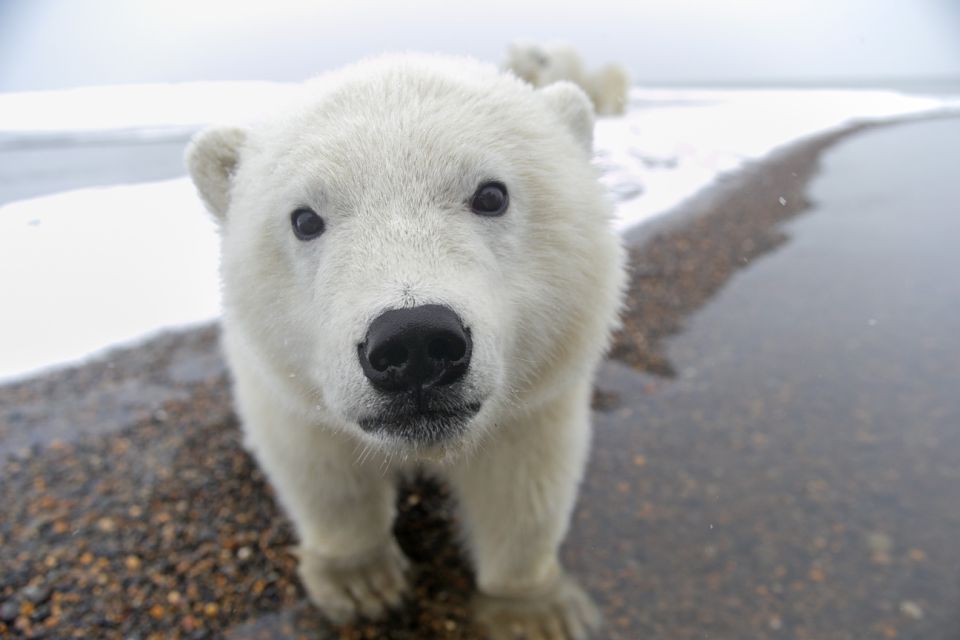
Polar bears are not territorial and despite their size they are usually dominated by brown bears when they come into contact. They are an apex predator but they can be predated by Orcas when swimming, although this is rare.
Although they are born on land, polar bears are excellent swimmers and spend much of their time on the water, hence their scientific name of “sea bear”. They will often swim for around three days and can swim at around 6 mph. For this reason, they rely on sea ice for hunting, resting and mating but due to climate change this vital sea ice is receding.
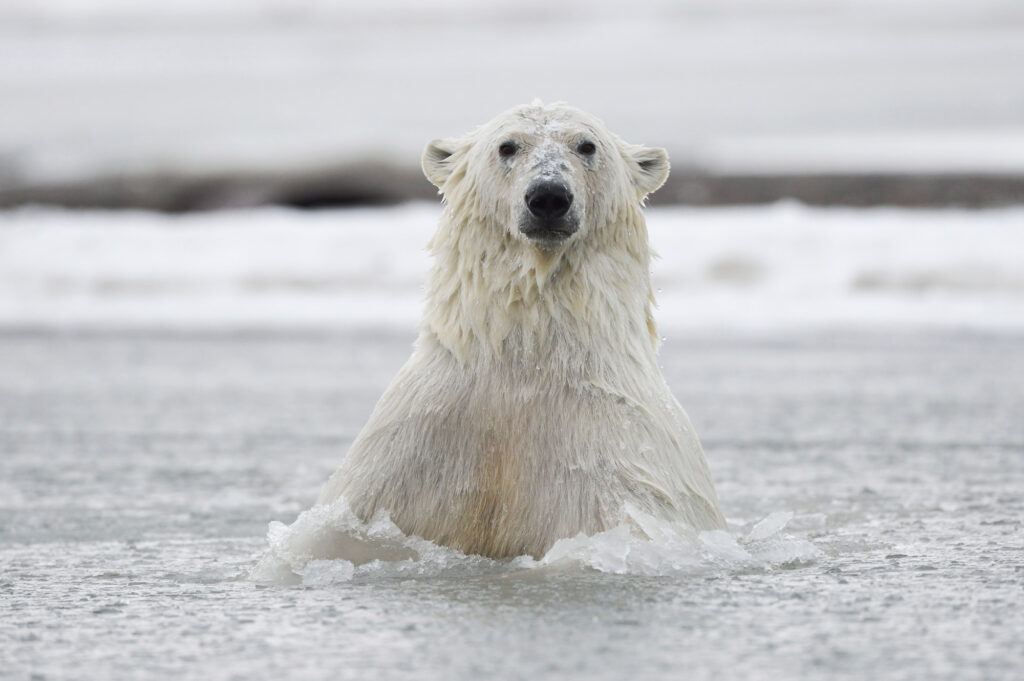
The ice arrives later each year and disappears earlier so polar bears are losing their habitat and are increasingly coming into contact with human populations as a result. Polar Bears are powerful hunters and do pose a potential threat to humans with around 20 attacks occurring over the last few years although if it is not hungry a polar bear will be very unlikely to attack a human unless severely provoked. They do not often come into contact with humans though, so can be unpredictable. Unlike brown bears, who attack in defence when surprised, polar bear attacks are predatory and therefore often fatal.
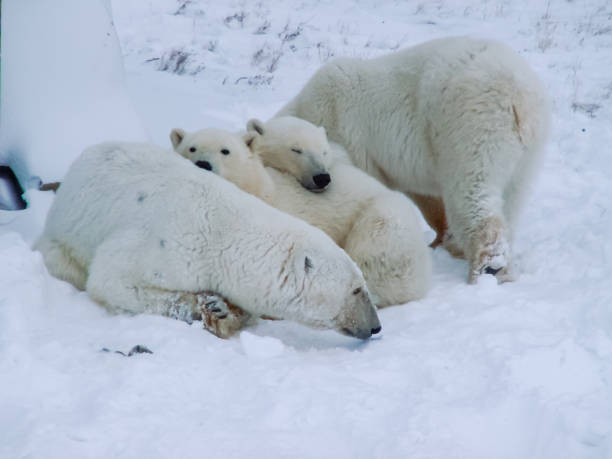
Polar Bear Babies
Polar bears are usually born between November and January in the height of winter. The mother digs a meternity den which provides a warm place to give birth to the newborns. When they are born, newborn polar bears weigh only around 450g and are about 32cm long. They are usually born in pairs and they are blind, bald and toothless and rely entirely on their mothers. They are also very cute!
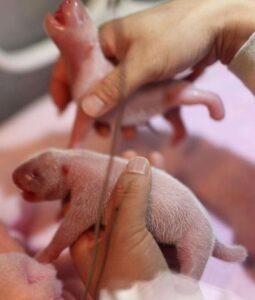
Polar Bear Cubs
The polar bear cubs will open their eyes after one month and learn to walk in two months. By this time their teeth are coming through and they have grown thick fur. To acclimatise them to the cold, their mothers will occasionally take the tiny cubs outside of the den. Once the cubs are strong enough to make the journey to the sea ice, the mother will take them out of the den. This occurs in the spring and on the way to the sea ice, the polar bear mother will teach them how to hunt, swim and survive in their Arctic habitat as well as hunting seals for her own needs and to provide for the cubs.
The cubs are quick learners but will usually stay with the monther for two to three years, learning how to hunt and to survive in the environment.
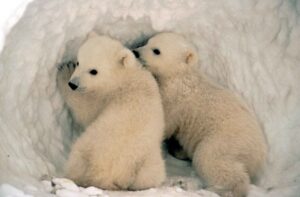
Polar Bears in Culture
Unsurprisingly the polar bear is very popular in culture, especially in areas where they are native. The Inuit and Alaska natives have many legends and folk tales about polar bears, including one about how the constellation that resembles a bear surrounded by dogs came into being. There is a deep level of respect for the polar bear in these cultures and it is portrayed as being both spiritually powerful and closely akin to humans.
Even now the polar bear is a popular mascot and icon. The Canadian two dollar coin has a polar bear on it and vehicle license plates in the Northwest Territories of Canada are in the shape of a polar bear. The polar bear is the mascot of the Eisbaren Berlin Hockey team as well as the Charlotte Checkers. It is also the mascot of the University of Alaska and Bowdoin College in Maine.
Grolar Bears
What is a Grolar Bear? As the name suggests, a grolar bear is a grizzly/polar bear hybrid, specifically the offspring of a male grizzly bear and a female polar bear. They are a rare occurance but have been confirmed both in the wild and in captivity. In 2006, the occurrence of this hybrid in nature was confirmed by testing the DNA of a unique-looking bear that had been shot near Sachs Harbour, Northwest Territories on Banks Island in the Canadian Arctic.
There have been several subsequent discoveries of grolar bears including a bear shot on Victoria Island which looked like a polar bear but had brown fur on its paws, long claws and a grizzly-like head. This bear turned out to be the hybrid of a male grizzly bear and a female hybrid. Since that discovery there have been eight further hybrids discovered, half of which were 50:50 “Grolar bears”. It is hard to know whether this is a more common occurence due to climate change, however, as all of these hybrids were traced back to one female polar bear.
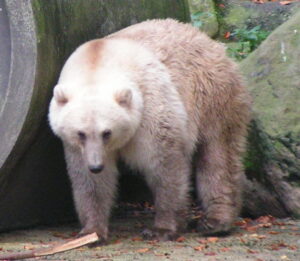
Pizzly Bears
Much like a grolar bear, a pizzly bear is a polar/grizzly hybrid but this time involving a male polar bear and female grizzly bear.
Here at The Bear Accessories, we love polar bears. With their white fur (technically colourless) and black noses they are an iconic part of the arctic and we hope that something can be done about their habitat loss before it is too late.
If you are looking for some polar bear stuff, we have all sorts of things that might be of interest. Why not check out our polar bear onesies or polar bear watches?
